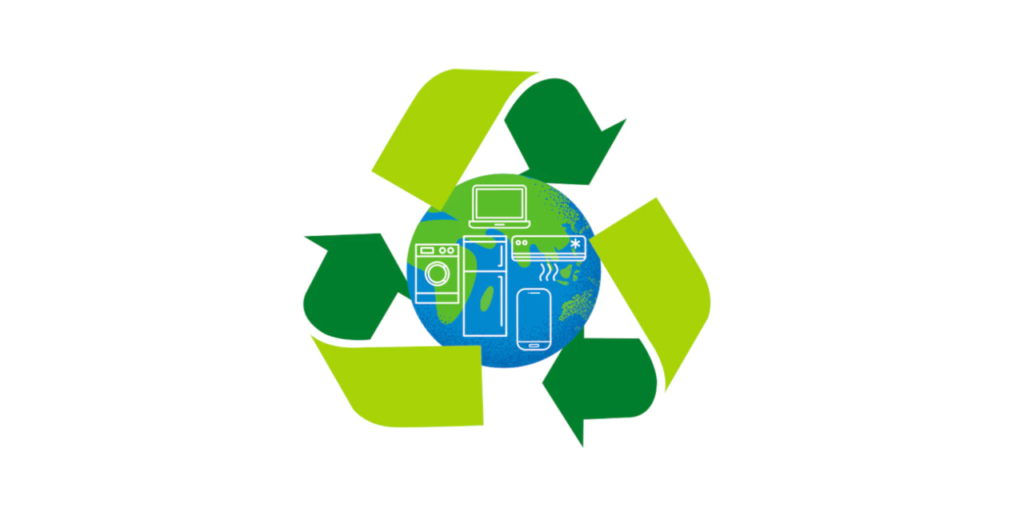
Understanding E-Waste and Its Environmental Consequences
E-waste, or electronic waste, encompasses a range of discarded electronic devices and components, including smartphones, computers, home appliances, and other consumer electronics. This category of waste has become one of the fastest-growing environmental concerns globally, driven by rapid technological advancements and an ever-increasing consumer appetite for the latest gadgets. As new models hit the market, outdated devices quickly turn into e-waste, posing significant environmental challenges.
The improper disposal of e-waste leads to severe repercussions for the environment. Many electronic items contain hazardous substances, such as lead, mercury, and cadmium, which can seep into soil and water sources, causing contamination and poisoning local ecosystems. These toxic materials can disrupt plant and animal life, and even enter the human food chain, leading to serious health risks. For instance, lead exposure can result in developmental issues in children, while mercury is known to affect the nervous system.
Moreover, e-waste contributes to the accumulation of non-biodegradable materials in landfills. Plastics, metals, and other components used in electronic devices do not decompose easily, leading to long-term environmental pollution. When subjected to incineration, e-waste can release harmful dioxins and furans, further exacerbating air pollution and contributing to global warming.
The global nature of e-waste management also poses unique challenges. Electronic waste is often exported to developing countries, where regulations and facilities for proper disposal and recycling are lacking. This outsourcing of e-waste leads to widespread environmental degradation in areas already struggling with infrastructural limitations. Consequently, it is crucial to address e-waste management through both local and international cooperation, promoting sustainable practices that mitigate its harmful impacts.
Understanding the scope and danger of e-waste is the first step towards developing effective strategies for its management. As we continue to embrace new technologies, a proactive approach to minimizing the environmental effects of e-waste is essential for safeguarding our planet and future generations.
The management of electronic waste (e-waste) has emerged as a critical environmental issue. Various methodologies have been developed to address the growing volume of e-waste, each offering distinct advantages and limitations. Among the most common methods are mechanical shredding and separation, chemical treatments, and thermal processing.
Mechanical Shredding and Separation
Mechanical shredding and separation is one of the prevalent e-waste treatment methods. This process involves breaking down electronic items into smaller pieces using industrial shredders. The resulting fragments are then separated into different material types such as metals, plastics, and glass. The primary advantage of this method lies in its ability to quickly process large volumes of e-waste. However, it has limitations, including the potential for hazardous substances to be released if not managed correctly. Additionally, mechanical separation often achieves only partial material recovery, necessitating further processing.
Chemical Treatments
Chemical treatments are employed to extract valuable metals from e-waste through various processes such as leaching and electrolysis. These methods can efficiently recover precious metals like gold, silver, and palladium. Chemical treatments are particularly effective for high-value e-waste components like printed circuit boards. However, they generate chemical waste, which requires proper management to prevent environmental contamination. Furthermore, the use of chemicals can pose health risks to workers if safety measures are not strictly followed.
Thermal Processing
Thermal processing involves the use of heat to recover metals and other materials from e-waste. Techniques like pyrolysis and incineration fall under this category. Thermal processing is capable of treating e-waste with high metal content, converting plastics into fuel, and reducing the volume of waste. However, the high-energy requirements and the potential release of toxic gases during the process are significant drawbacks. This necessitates the implementation of advanced emission control systems to mitigate environmental impacts.
Advanced Recycling Technologies and Emerging Trends
The e-waste sector has witnessed several technological advancements aimed at improving recycling efficiency and reducing environmental harm. Innovations such as hydrometallurgical processing and bioleaching are gaining traction, offering more sustainable alternatives to traditional methods. Hydrometallurgy involves the use of aqueous solutions to recover metals at lower temperatures, thereby reducing energy consumption. Bioleaching employs microorganisms to extract metals, further minimizing chemical use.
Emerging trends also emphasize the importance of circular economy principles in e-waste management. These include designing electronics for easier recycling, enhancing product longevity, and implementing take-back schemes. The adoption of such strategies is vital for sustainable e-waste treatment, ensuring that valuable resources are reclaimed and environmental impacts are minimized.
Reduction Strategies for E-Waste Generation
The increasing volume of electronic waste, or e-waste, poses significant environmental challenges. An effective approach to mitigating these challenges involves implementing reduction strategies that aim to minimize e-waste generation from the outset. One such strategy is sustainable product design. By integrating environmental considerations into the product development phase, manufacturers can create electronic devices that are more durable, easier to repair, and simpler to recycle. Emphasis on modularity—designing products in such a way that individual components can be replaced or upgraded—extends the lifespan of electronic devices, thereby reducing the frequency of disposal.
Encouraging manufacturers to adopt eco-friendly practices is crucial. This includes designing products with fewer toxic materials and more recyclable components. Multi-stakeholder initiatives can help promote these practices by bringing together manufacturers, regulators, and consumers to establish industry standards and best practices for sustainable product design. By adhering to these standards, manufacturers can not only contribute to reducing e-waste but also enhance their brand reputation among environmentally conscious consumers.
Consumer education is another pivotal element in reducing e-waste generation. Awareness campaigns that inform the public about the environmental impacts of e-waste and the benefits of responsible disposal can significantly influence consumer behavior. Encouraging consumers to make informed purchasing decisions, prioritize products with longer lifespans, and participate in recycling programs can collectively contribute to reducing the volume of e-waste.
Legislation and policies also play an indispensable role. Policymakers can enhance producer responsibility by implementing regulations that require manufacturers to take back end-of-life products. These digital product take-back schemes not only encourage manufacturers to consider the end-of-life phase during the design process but also establish a feedback loop where valuable materials can be retrieved, thereby promoting circular economy principles. Financial incentives, such as tax breaks or subsidies for companies that engage in take-back programs, can further motivate compliance and innovation in the electronics sector.
Reducing e-waste generation requires a multifaceted approach involving sustainable product design, consumer education, and supportive legislation. By addressing these areas, we can work towards a more sustainable future with minimized environmental impact from electronic waste.
Global and Local Initiatives for E-Waste Management
The growing volume of electronic waste, or e-waste, has prompted various stakeholders worldwide to develop effective management initiatives. Countries such as Germany and Japan demonstrate commendable practices in e-waste management through comprehensive legislation and public-private partnerships. Germany’s ElektroG law, aligned with the EU’s WEEE Directive, mandates producers to take responsibility for the end-of-life management of their electronics. This extended producer responsibility (EPR) model ensures proper collection, recycling, and disposal, significantly reducing environmental harm.
Japan’s approach is equally noteworthy, with its Home Appliance Recycling Law, which requires manufacturers to recycle grouped items like air conditioners, televisions, and refrigerators. Collaboration between municipalities, manufacturers, and recycling businesses forms the backbone of this system. Such integrative frameworks have fostered an impressive recycling rate of approximately 90% for these appliances. This model serves as a case study for other nations aiming to enhance their e-waste management strategies.
In addition to national efforts, numerous non-governmental organizations (NGOs) and multinational corporations are spearheading e-waste recycling initiatives. For instance, the Right to Repair movement advocates for accessible repair options to prolong the lifecycle of electronic products. Concurrently, tech giants like Apple and Dell have launched take-back and recycling programs, committing to utilizing recycled materials in new products.
The role of international conventions is invaluable in establishing global e-waste management standards. The Basel Convention, aimed at controlling transboundary movements of hazardous wastes, including e-waste, underscores the necessity for environmentally sound management practices. Amendments to this convention specifically target the illegal dumping of e-waste in developing countries, promoting stricter regulation and compliance.
However, challenges persist, notably in harmonizing regulations across borders and ensuring robust implementation. Emerging economies often grapple with insufficient infrastructure and regulatory frameworks to manage e-waste effectively. Nevertheless, the cumulative efforts of governments, the private sector, and NGOs exemplify significant strides toward mitigating the adverse environmental impacts of e-waste.







